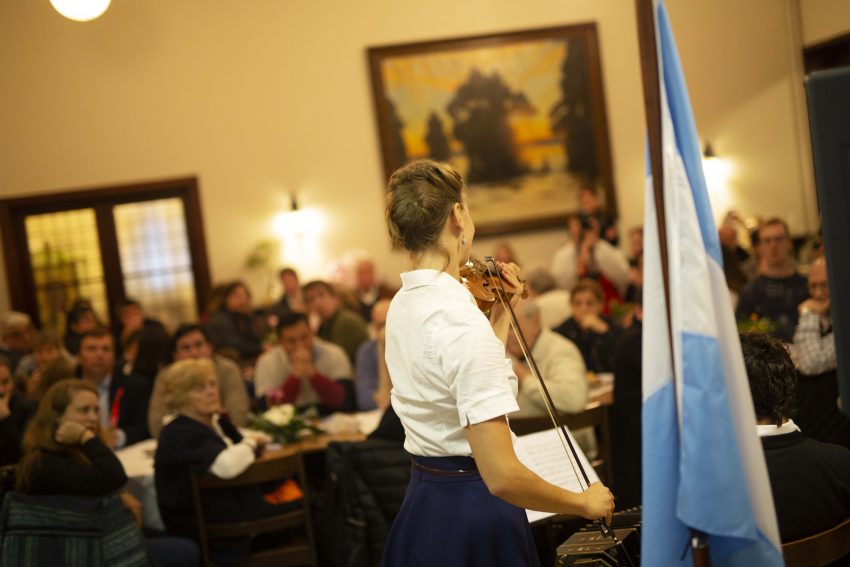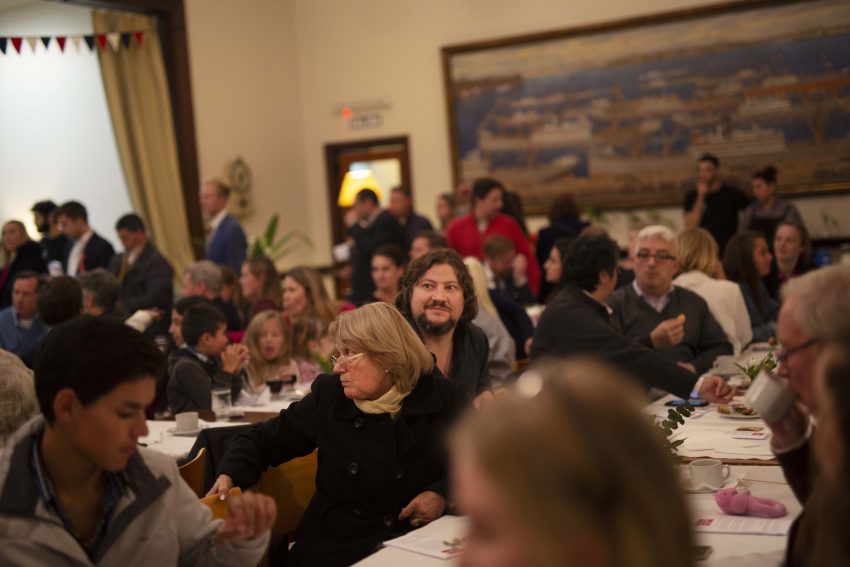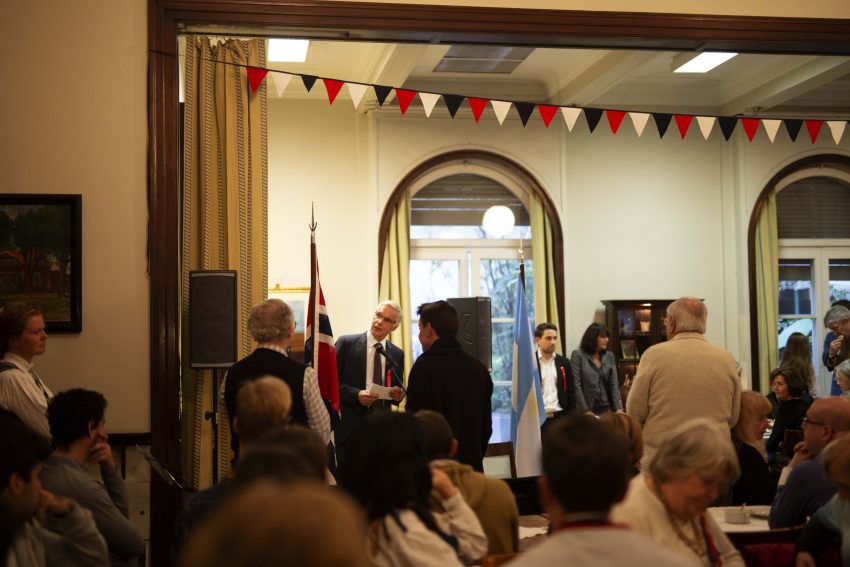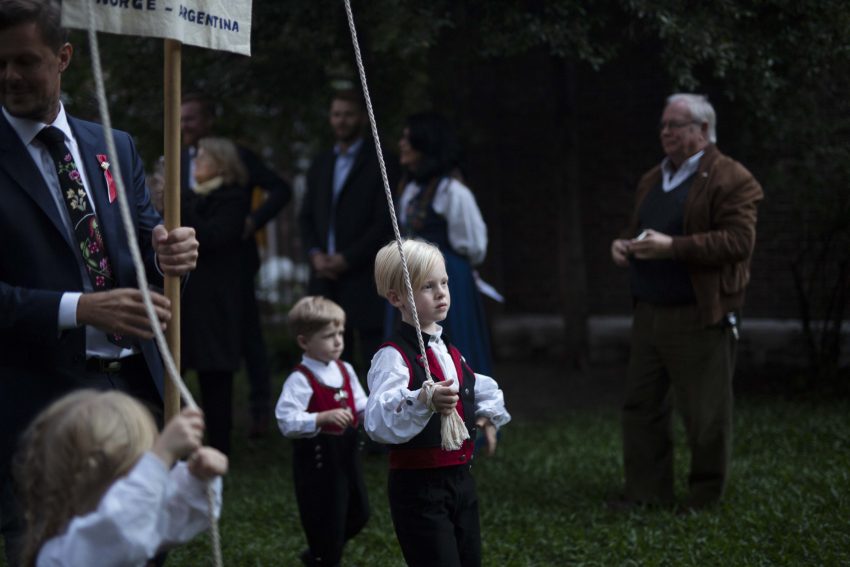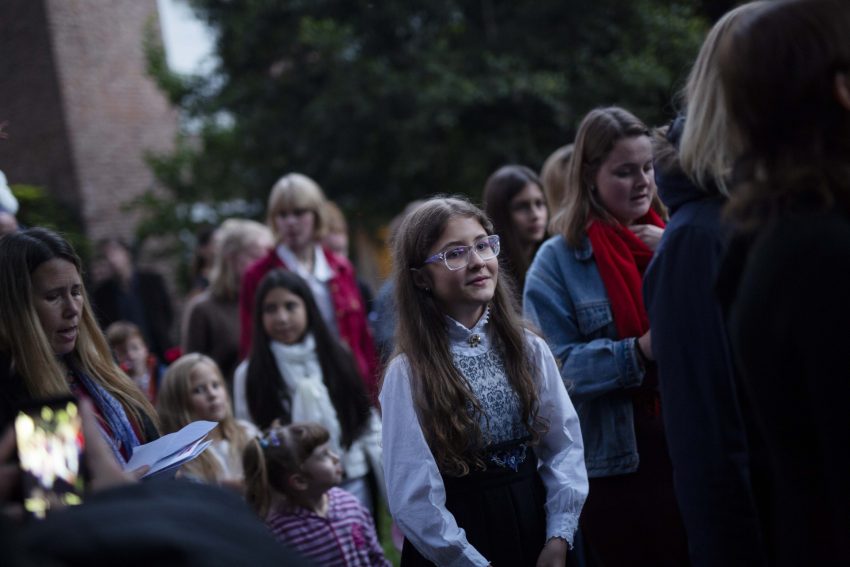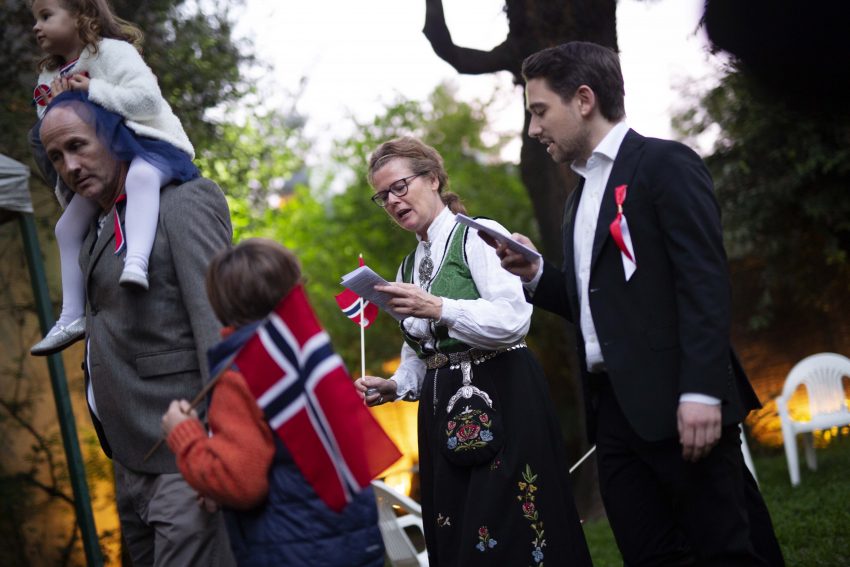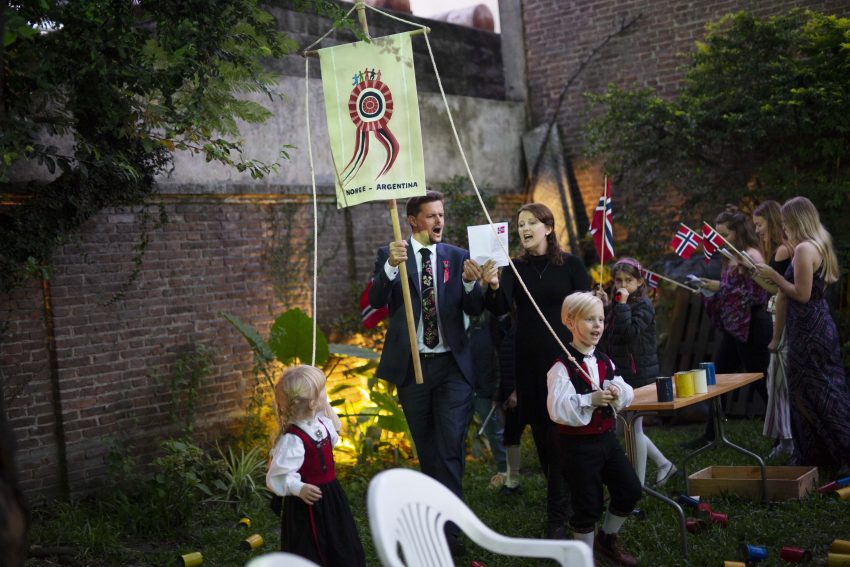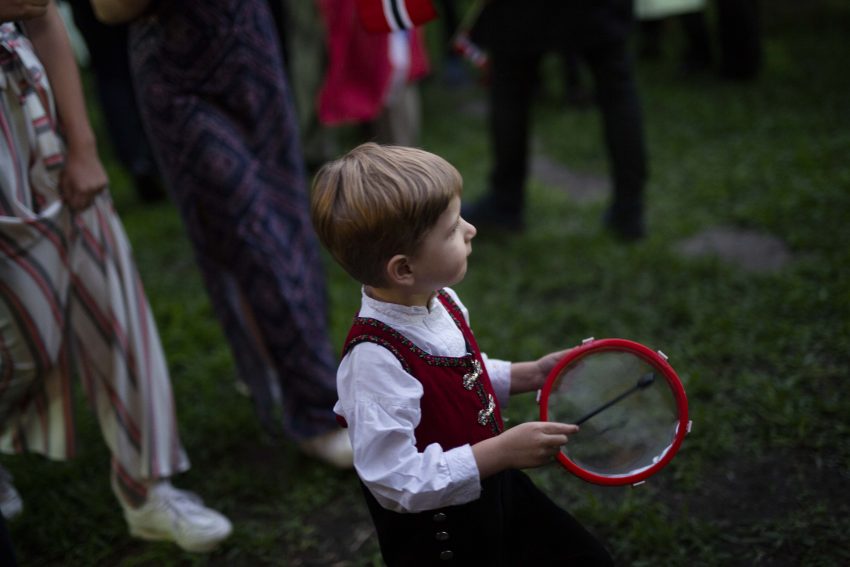
Unlike many countries, the Norwegian Constitution Day is not militaristic, but a big children‘s, friends and family party with ice cream, cake, champagne and a sparkling parade. Every year, the cheerful and jolly birthday is celebrated with flags and cakes, traditional folk costumes and a children‘s parade in the backyard of the Swedish Church in Buenos Aires. Youth and elders, among the guests are third and forth generation Norwegians living their whole live in Argentina with the stories of their immigrant grandparents crossing the Atlantic Ocean being told within their family. Furthermore, there are the Norwegians studying, currently working in the capital or staying because of a latino love. All gathered to honor the signing of the constitution by the Eidsvoll Assembly on 17 of May in 1814. This years ball took place the Sunday 20th and Kulturstudier students volunteered to arrange games for the children.
Norwegian Immigration History
“People immigrated to the US together. One by one they ran away to South America”, the Norwegian author Kjartan Fløgtad writes in his book «Eld og Vatn. Nordmenn i Sør-Amerika». Between 1820 and 1940, the biggest wave of immigrants in world history moved from one continent to another. According to “Expectations Unfulfilled: Norwegian Migrants in Latin-America 1820-1940”, sixty million people found new ground to create a home in this period. From Norway, nearly one million emigrated transatlantic, and while nine of then of these went to Northern America and primarily the US, one tenth came to South America and more importantly – to Argentina.
Because of the sea transport, the Norwegians opened one of it‘s first embassies in Buenos Aires only one year after Norway declared independence in 1905 with the dissolution of the United Kingdoms of Sweden and Norway. Coming to the very south of the world to live, the Norwegians were above all young men, working as sailors, captains, nautical engineers and shipping agents, but they were also working within whaling, mining, railroad construction, bacalao trade, meteorological and hydrological surveys and agriculture. Later on, they invited their girlfriends and wives to come and join them. After the Second World War, a big group of Norwegian Nazis and NS sympathizers found their way to the Argentine land, and of the Norwegians escaping jail in the war aftermath, most escaped to Argentina. But for many, of all the Norwegian immigrants that is, the adventure didn’t last too long, and almost half of all transatlantic immigrants returned to their home country. Though the numbers returning from Argentina is not clear, it is likely to think that the Spanish language, being slightly harder for Norwegians than English, made it more difficult, in addition to the different culture, to be successful.
Today there are around 300 Norwegians living in Argentina and many thousands ancestors of Norwegians. There are around 20 Norwegian companies present in Argentina, and among them: Hydro, Yara, Odfjell Terminals, Norwegian Air Shuttle, Kongsberg Gruppen and Statoil.
-Hilda-
